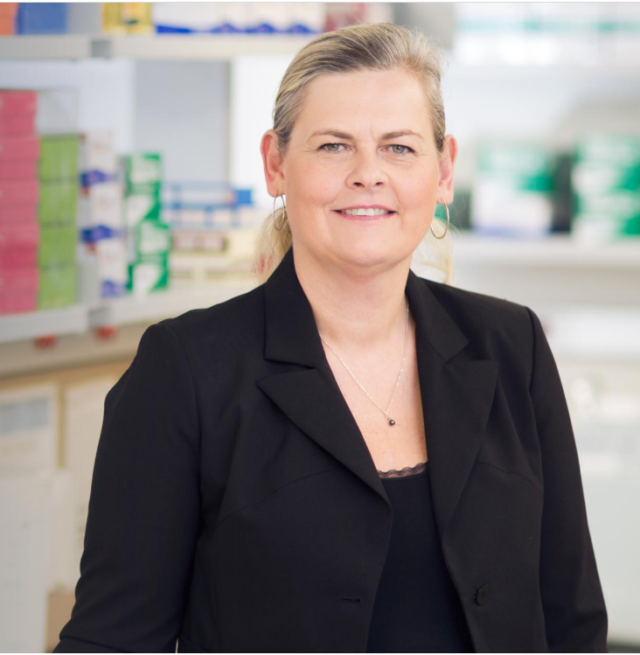Michelle Krogsgaard is building a better mouse — one that eventually could lead to new approaches for cancer immunotherapy.

With support from The Mark Foundation, her lab at the NYU Langone Perlmutter Cancer Center is developing mice with humanized T cell receptors (TCRs) that allow immune cells to recognize the mutated proteins that cancer cells produce. The goal of this work is to develop in vivo tools that enable engineering of the human immune system to become more effective at attacking cancer.
“Our research is aimed at improving current therapies,” she says. “We hope to find ways to make these treatments better at fighting cancer while preventing some of the toxicities, as well as the resistance, that we often see with the therapies we have now.”
Krogsgaard’s research has the potential to contribute across a range of immunotherapies, from adoptive cell transfer therapy to immune checkpoint blockade to anticancer vaccines.
One application is to use humanized mouse models to generate TCRs that recognize snippets of mutated proteins in cancer cells called neoantigens. Once generated in mice, the TCRs would be cloned and transferred into a patient’s own T cells rendering them more effective at recognizing and killing cancer cells when transferred back into the patient.
Chimeric antigen receptor (CAR) T therapy, a form of adoptive cell transfer immunotherapy, has demonstrated clinical efficacy in a handful of blood cancers but has proved less successful when applied to solid tumors. Krogsgaard asserts that instead of a (CAR) TCR, “the full T-cell receptor that’s designed to recognize the neoantigen would be put into the patient’s T cells. This approach has shown more promise than CAR T cells in treating solid tumors.”
Another application is to use the mouse model to identify the TCRs that recognize neoantigens capable of stimulating the immune system, and then apply that knowledge toward designing novel anticancer vaccines. “Our project is focused on identifying these receptors and creating what you could call a ‘living library’ across a range of neoantigens,” she says.
TCRs will be developed in the context of humanized major histocompatibility complexes (MHCs), which will enable the generation of a TCR repertoire with significant diversity to provide reasonable immune compatibility across multiple ethnic groups. This could lead to fully personalized therapies as well as treatments that are more off-the-shelf. “You can delete the MHC, which is what’s responsible for rejection and graft versus host,” she says. “Or you could imagine treatments with some HLA matching, so more patients could tolerate it.” Identification of TCRs that see neoantigens from common driver mutations like RAS could also lead to a more broadly applicable therapy that could be partly HLA matched.
The wider focus of Krogsgaard’s research is understanding the mechanisms of how the immune response to cancer is mediated and identifying the underlying mechanisms at play when patients don’t respond to treatment. She works at an intersection of science that is relatively unique: biophysics and immunology — using biophysical, imaging and proteomics techniques to investigate TCR signaling cascades by isolating receptors and measuring their interactions with other signaling proteins.
Krogsgaard used support from a first ASPIRE award to establish humanized mouse model feasibility: “I’m not going to lie,” she says. “It was a very ambitious project to design a mouse that expresses the full human T cell repertoire as well as human MHCs.” Future efforts will focus on translating knowledge gained about melanoma-specific neoantigens into new therapies.
Krogsgaard notes that funding from The Mark Foundation is very different from more traditional research support in that it allows her to do research that is high risk, but potentially with a much higher reward: “Funding from most other sources requires projects to be very hypothesis-driven,” she says. “When you want to develop research tools, like new mouse models and new reagents, that’s not something where it’s easy to get funding.”
But if you want to make big discoveries, “you have to take these big risks,” she notes. “The Mark Foundation gave me time to show what I could do, and now it’s enabling me to move into the second phase of this project. There’s no other foundation that I know of that does that, so I think it’s very unique.”
Krogsgaard’s collaborators — and the co-principal investigators on both of her ASPIRE Awards — are Jef Boeke and Jeffrey Weber, also of NYU Langone. Boeke, Director of the Sol and Judith Bergstein Institute of System Genetics, is contributing his expertise in synthesizing large pieces of DNA that are needed to generate entire TCR and MHC repertoires. Weber, a medical oncologist and immunotherapy expert, is sharing his clinical experience and providing patient samples.
“Without these collaborators, I could not have done this project,” Krogsgaard says. “Their work is very important, and they’re with me all the way.”



